Let’s play a quick game called countries and food. When you see the name of a country, quickly match it to its most iconic food. For example, Malaysia: Nasi Lemak; Thailand: Green Curry; Taiwan: Fried Chicken; Singapore: Hainanese Chicken Rice; Hong Kong?
I’ll bet every last siew mai that the first thing you thought of was dim sum. And I don’t blame you! Hong Kong style dim sum is such a yummy affair and some of them pork buns are to die for! But if you’re planning a trip to Hong Kong anytime soon, please don’t stuff yourself with dim sum. Because here’s a list of 14 foods you need to try in Hong Kong sans dim sum!
Note: As an ethical writer, I take my journalistic responsibility very seriously. To ensure the quality of this article, I had to personally taste everything on this list just to make sure I could describe them as best as I could. Much sacrifice and dedication!
Also read: Food Guide: 12 Great Places We Ate in Hong Kong
1. Zha Leung (炸两)
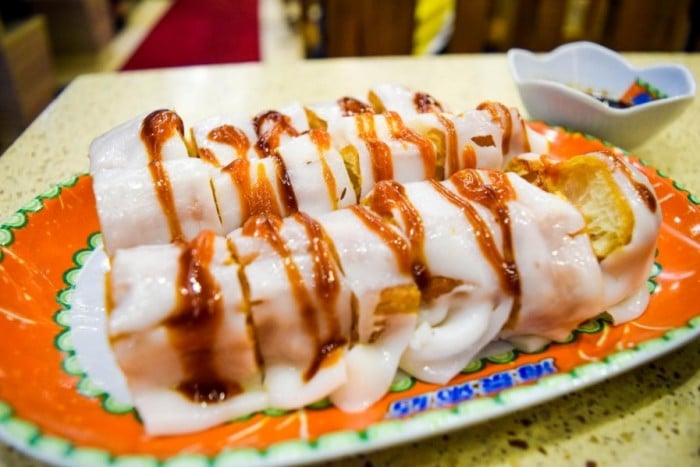
So, I was having breakfast one morning in a crowded restaurant when this lady sitting opposite of me (we had to share a table) ordered something in Cantonese which I’d never heard before. When her order arrived, I just stared with a thorough ‘what-sorcery-is-this’ look.
You see, being Malaysian Chinese, I’ve had my fair share of chee cheong fun (rice noodle wraps) and yau tiew (Chinese-style fried dough) but never did I ever conceive of the idea of wrapping one with the other. And that’s exactly what zha leung is: Yau tiew wrapped in chee cheong fun.
The texture is unique, to say the least. Usually, you get pastries with crispy exteriors and a soft centre but this Hong Kong snack flips reverse the trend. Biting into one means a soft, springy exterior and a crunchy, doughy centre. Add to that the usual sweet, savoury chee cheong fun sauces and a tangy soy sauce dip, and you’ve got a match made in culinary heaven.
Average price: About 20HKD per serving
2. Beef Brisket Noodle
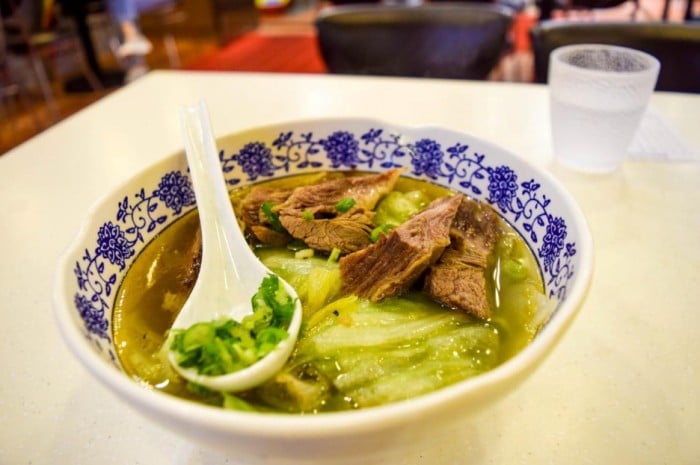
Beef brisket, or ngau lam is seriously yummy business in Hong Kong. Most noodle stores and restaurants will sell this dish and that’s one thing to be exceptionally thankful for.
Springy egg noodles – or if you prefer, you can ask for flat rice noodles (koay teow) or vermicelli (bihun) too – is served with a rich broth and topped with tender beef brisket that is often a perfect mixture of fatty and lean proportions. The fatty bits melt in your mouth and the lean parts of beef provide an adequate chew, ensuring a gob-smacking experience. Depending on the restaurant, you sometimes find the noodles served with some vegetables or a chunk of daikon radish, so you can imagine how deeply-flavoured the soup is.
You can also order it with dry noodles (usually tossed with either oyster sauce or some of the awesome meat juice which drips from the beef brisket) and served with a bowl of soup. However, expect to pay a little extra for this. You could also have beef brisket with rice but the original is always the best.
Average price: 30HKD per serving. (Don’t be put off by price. Most shopkeepers are very generous with the amount of beef brisket)
3. Chinese-Style Pastries
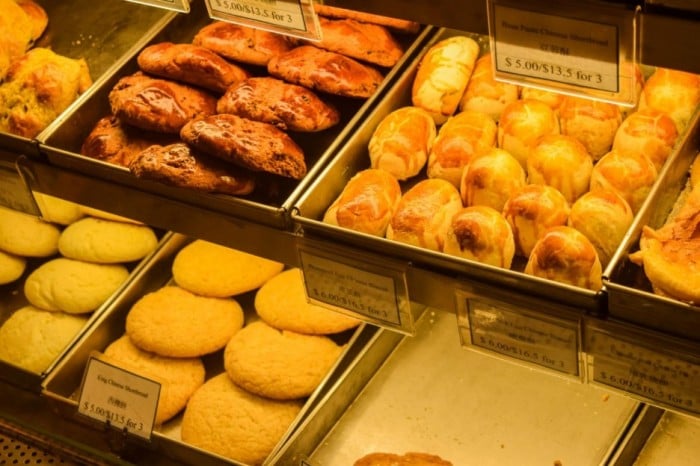
The French have their croissants, the British have their scones, and the Swiss have their…Swiss rolls? Okay, that last one is untrue, Swiss rolls don’t actually come from Switzerland. Yeah, I know, right? But the thing is, most countries have some form of pastry they are best known for and I suppose in Hong Kong, it’s their Chinese-style pastries, or siew peng, which in Cantonese roughly translates to baked goods or biscuits.
There’s a ton of variety here, from red bean puffs, to shortbread to the ever-famous wife cake (traditional Cantonese pastry with a thin, flaky crust and (usually) winter melon paste filling). And here I thought Cantonese pastries were limited to baked BBQ pork buns. Most bakeries in Hong Kong have at least one or two of these pastries on sale at any given time and they’re almost always freshly baked in the morning.
My personal favourite is the pei dan sou which is a bean paste filled pastry with preserved (century) egg pieces in them. I know, it sounds like a weird combination but by Gordon Ramsay, it’s a weird combination that works wonders on your palette.
Average price: between 3-5 HKD per piece. A suggestion is to buy a few pieces together as that often leads to a discount.
4. Wonton Noodles
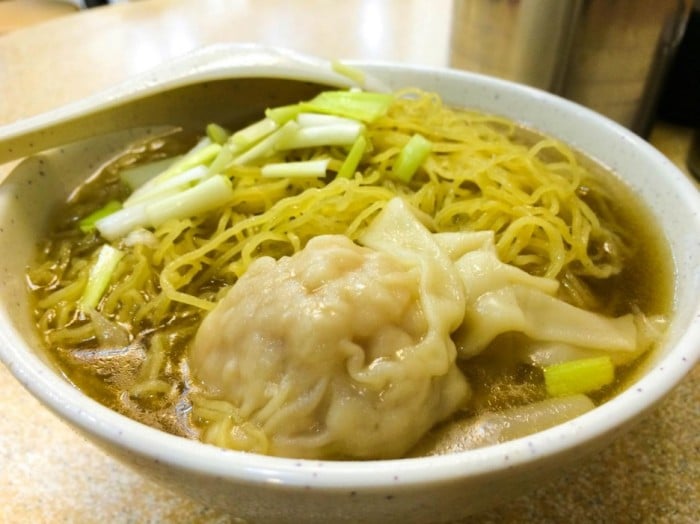
First of all, no, that is not an exceptionally small, shallow bowl, nor is the image particularly zoomed in. Next, look at the wonton, just…just look at it! And there were 4 of those monsters in my order!
When you order wonton noodles in Malaysia or Singapore, chances are the ratio of noodles to wonton (meat dumplings for those who might not have tried it before) is about 7:3. A big serving of egg noodles and a few small pieces of wonton with maybe a side of char siew (BBQ pork slices). In Hong Kong, the number of wontons given is the same, but it’s more of a 5:5 ratio.
They are HUGE. Often stuffed with a mixture of pork and juicy shrimp, as in whole pieces of shrimp, these juicy dumplings alone are enough to fill you up. Who needs the noodles? But then again, the springy noodles in the clear broth seem to just bring out the taste of the wontons even more! Unfortunately, the shops I went to never seem to serve the noodles with char siew, so there’s that but again, look at the wonton…just look at it! I almost got a cramp holding on to it using my chopsticks!
Average price: 30HKD per serving
5. Various Roast Meats
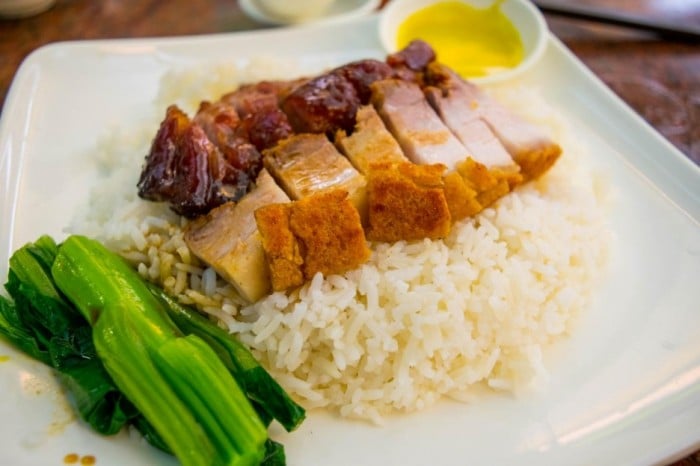
And speaking of char siew…
Singapore may be the home to the world’s first chicken rice hawker stall with a Michelin Star, but Hong Kong is the home of roast meat craft (is that even a proper phrase?). Pork belly, chicken, duck, goose, cured sausages (red sausage)…you name it!
I don’t think much explanation is needed for this. Basically, you get a plate of rice, roast meat, some veggies for garnish (probably, since they usually give you like, one miserable strand of choy sum on the side) and a wasabi based dipping sauce. Real talk, my mouth just watered.
You can find these roast meats anywhere, from fancy restaurants, to humble stalls and even packaged in the supermarket. I’ve actually tried the ones from the supermarket and while they’re not half bad, they don’t hold a candle to the freshly prepared dishes. The most famous, and most Hong Kongese variation, is the roast goose with rice. If you plan to try that, make sure not to go too late or you’ll find that they’ve sold out well before dinner time sometimes.
Average price: Ranging from 30-40HKD per serving of meat with rice
6. Egg tarts
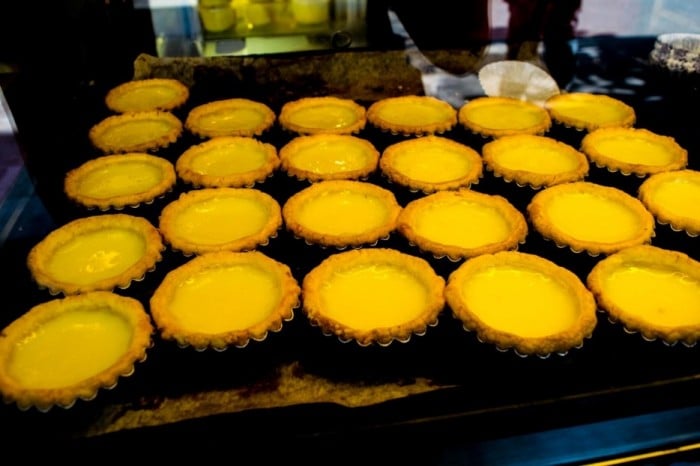
I would have included these in the Chinese pastries section but they deserve a spot of their own on this list. Plus, I just felt like I needed to put this photo up here for some reason.
Egg tarts are probably pretty common throughout Asia but I think the thing which gives the Hong Kong version the edge is the exceptionally crumbly crust. You see, when you visit bakeries in Hong Kong around 10am, most likely, the first batch of egg tarts have just left the oven. The custard filling is sweet and warm and the crust is so flaky and crumbly that you can virtually fold the egg tart in half and stuff in your mouth (but why would you do that?).
There are also various ‘upgraded’ versions such as coconut egg tarts topped with cherries but believe me, the original version is the best.
Average price: 5HKD per piece. Same principle, buy in 3s or 4s for discounts
7. Eggettes
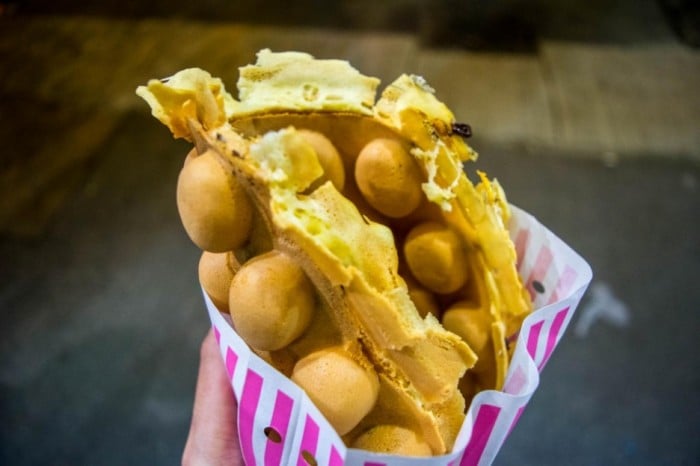
Right, how do I explain an eggette to those who’ve never seen it before? Egg waffle? Yes, egg waffle.
The batter used to make an eggette is the same as the one used to make a waffle. Except waffles are flat and square while eggettes look like…eggs? Well, a round carton of eggs. It’s a waffle with protruding, egg-shaped domes, so it’s cute, okay? It’s cute!
But I don’t judge food by looks. No, food is meant to be eaten. So how is the eggette, which is popular in Hong Kong and Macau, different from the waffle? Well, with waffles, the flavour is often applied on one side of the waffle and then folded like a sandwich. For the eggette, sometimes, the way to flavour them is to apply the flavouring to each individual spherical dome.
So, imagine you’ve ordered a chocolate eggettes. The stall owner spoons batter over the hot girdle and the batter seeps into the spherical spaces, creating about two dozen empty pockets. The stall owner whips out a container of chocolate chips and proceeds to fill every pocket with a few chips before spooning another layer of batter and closing the girdle. When it’s done, you have waffle-like crunchy exterior with dome-shaped pockets of melted chocolate. Look at that picture. Every ‘egg’ is filled with oozing, sweet melted chocolate.
And that, my friends, is an eggette.
Average price: Between 15-25HKD, depending on flavour
8. Traditional Desserts like Tau Foo Fa
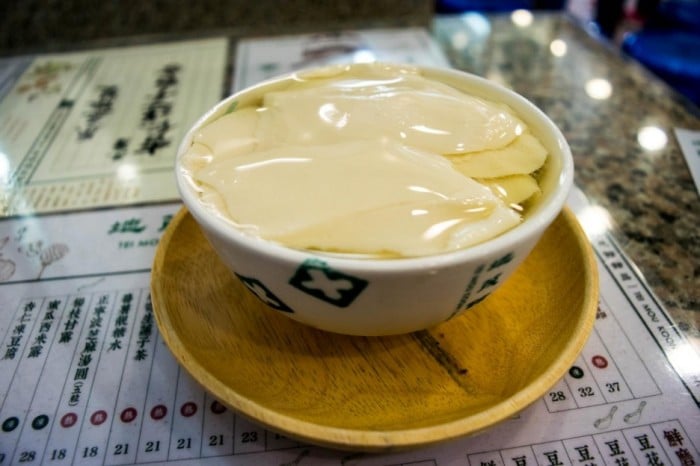
Okay, so, granted, waffles are more…western-like desserts/snacks, so about some more traditional Chinese-style dessert in Hong Kong?
Yes, in Hong Kong you’ll find a lot of desserts that have been around for a long time. Red bean soup, glutinous rice balls in ginger soup, and the ever famous tau foo fa, or tofu pudding for you English-speaking folk out there.
Made with extremely soft tofu that’s served with a sweet syrupy soup, you don’t really need to add much more to that satisfying slurp. Of course, as mentioned, there are also many other varieties of desserts and they all taste amazing. Be warned though, some may taste even sweeter than that chocolate eggette I just spoke about.
Unfortunately, by this point, I was so close to having a food coma that I could only manage tau foo fa. Still, it was silky perfection.
Average Price: Within 30HKD range
9. American Breakfast: Hong Kong Style
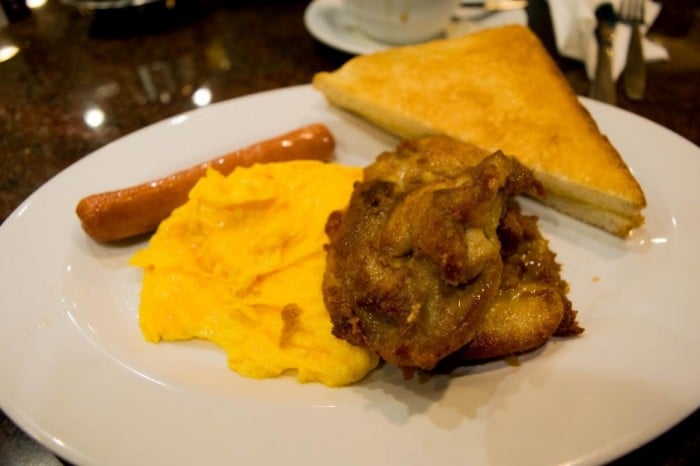
As an animated sponge who lives under the sea used to say to his pet snail, “Breakfast is the most important meal of the day”.
So, why not have it the Hong Kong way? Yes, it feels more like the American-style breakfast you get with room service whenever you stay in a nice hotel but for some reason, it has a distinct Hong Kong-feel to it. Most restaurants serve it the same way.
You get a piece of grilled (chicken, pork, or beef) meat of fried fish fillet and an additional serving of either chicken frankfurter, luncheon meat, bacon, or ham. You then have a choice between two sunny side up eggs or…I can’t even call it scrambled eggs to be honest…it’s more erm…firm…but not quite an omelet either. And also, you get a slice of toast with butter (occasionally, some restaurants use thick toast instead of the usual sandwich bread). If you’re lucky, you also get a spoon of baked beans, and a hot drink to wash it down.
It usually comes in a set and most of the locals order these protein-rich meals for breakfast and you never hear them complaining, so I won’t either. In fact, I quite like these, thank you very much.
Average price: About 40HKD inclusive of HOT drinks
10. Macaroni Soup Breakfast
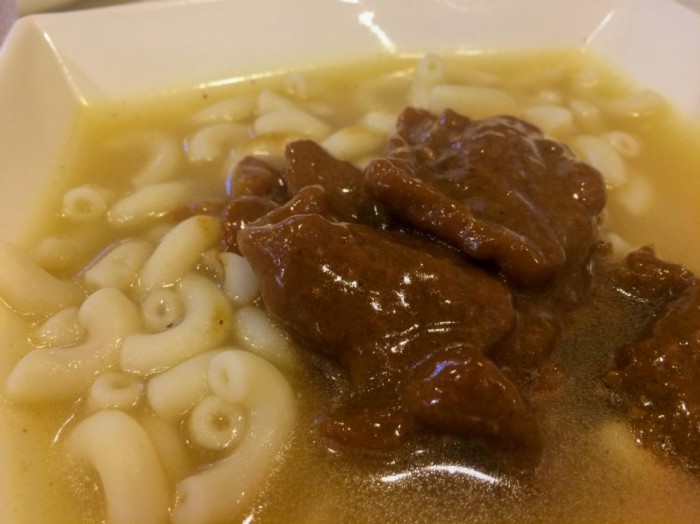
Alternatively, you could also go for another staple of Hong Kong-style breakfasts: the macaroni soup.
Most of the time, these soup dishes with macaroni (can be substituted with other types of noodles) are served with strips of ham and frozen vegetables. The picture you see above is a combination of macaroni soup and another favourite morning meal in Hong Kong: The satay beef noodle.
Satay here doesn’t mean the meat sticks (if you snickered here, you need counselling) in Southeast Asia. The dish is made up of slices of marinated beef served with instant noodles. Of course, I had the smart idea of changing instant noodles for macaroni, so I could combine the two dishes and save money (all for the sake of giving you fine folks a picture). #Genius
And now, I recommend that everyone should order this. The soup for the macaroni is originally nothing to shout about but once the marinade of the satay beef seeps into the soup? Good Bruce Almighty! That’s my way of saying delicious!
Average price: About 35HKD
11. Hong Kong Style Milk Tea
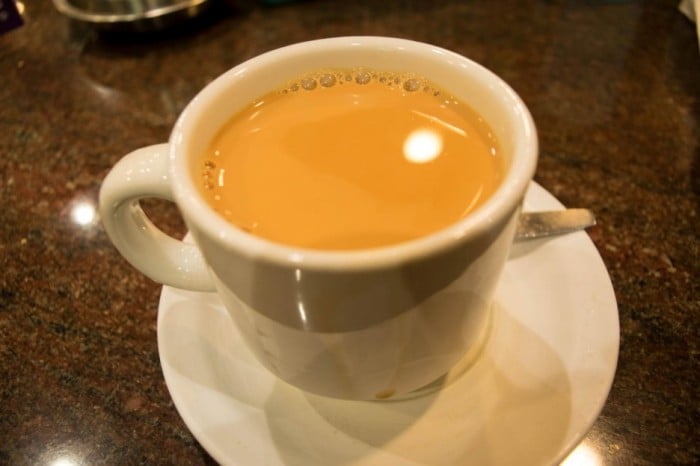
With every order of breakfast, or every meal to be honest, you’re given a choice of a free coffee or tea. I recommend going for the Hong Kong Style milk tea.
Yes, you find it everywhere you go in Asia but in Hong Kong, its authenticity can’t be replicated anywhere else. It’s a rich, milky taste which is just the right amount of sweet for me. (You can add sugar if you want it to be sweeter). You can find it anywhere in Hong Kong. Even the ones at McDonald’s are pretty good and they’re perfect for colder periods in Hong Kong’s weather. Plus, it’s literally one of the most Hong Kong drinks out there! One simply must try it when one is in the neighbourhood.
Average Price: FREE (comes in a set meal most of the time. Always free for breakfast sets. But this only applies to HOT drinks. You add about 2HKD for a cold version)
12. Curry Fishballs
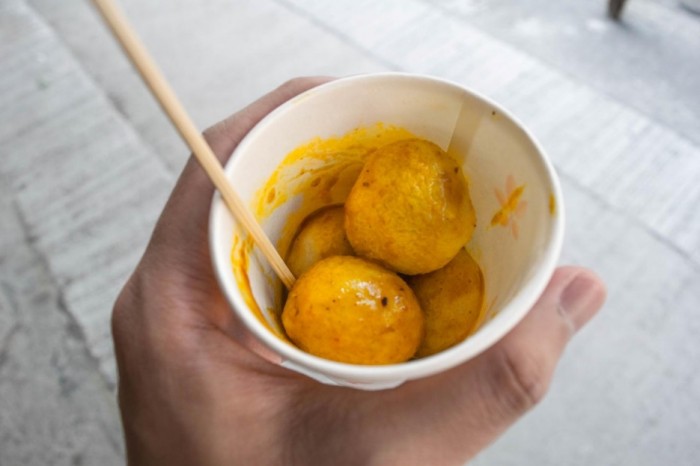
Now that breakfast is done, let’s get some snacks! I know, I need help.
These are the staples of Hong Kong snackery (I’ve eaten so much over the past 36 hours that I’m inventing my own words now). Springy balls of fish paste are given the spice and everything nice treatment. It is not spicy, so don’t be afraid of the hots if you can’t handle chillies. The aromatic smell of curry mixes well with the fishballs and they are best eaten out of a cup with a wooden skewer.
Of course, some people would also add other ingredients such as rice cakes and rice noodle wraps to make a real meal out of it but come now, do we really need to turn a classic snack into a full meal? Such sacrilege!
Average Price: 8HKD per serving
13. Bread
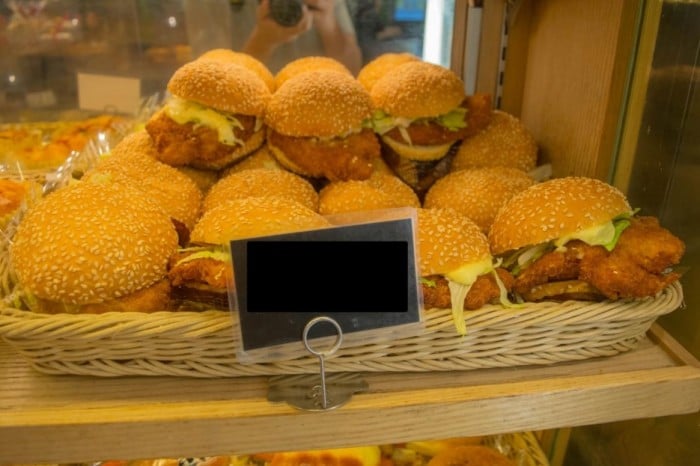
I swear, man…the bakeries in Hong Kong…
Apart from the pastries, egg tarts and (obviously) cakes, Hong Kong bakeries, regardless of which branch or family-run bakery, sell a wide variety of puff pastries, buns and burgers. And so far, I’ve not been disappointed yet!
My favourite, however, is the pork bun and it is exactly as it sounds. A crispy, juicy fillet of fried pork is sandwiched between two soft sesame seed buns. The taste is augmented with a moderate spread of mayo and crunch is added with decent amounts of shredded lettuce.
For something which doesn’t contain pork, buy the cheese bread loaf. It’s a loaf of bread, like your typical household sandwich loaf, except it contains cheese. And not just cheese on the crust, but cheese INSIDE the bread. Oozing, rich parmesan cheese. It’s so good that I ain’t even mad that chunks of bread are missing (because it’s replaced with cheese) in the loaf.
Average price: Ranging from 6–30HKD depending on what you’re buying
14. Claypot Rice
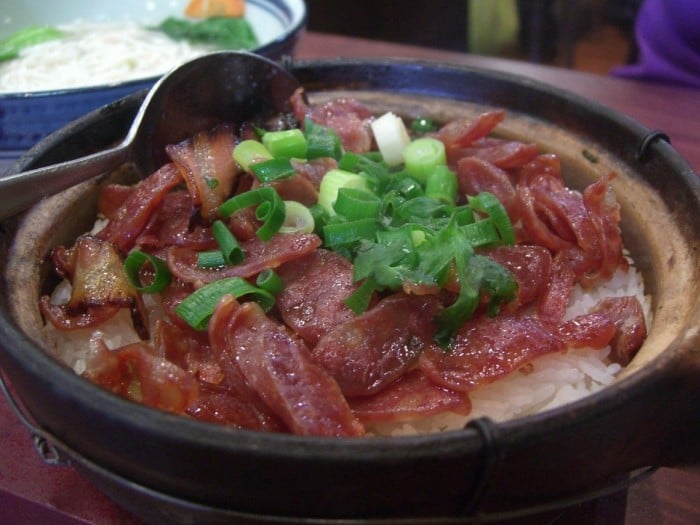 Image credit: Alpha
Image credit: Alpha
Okay, so this photo isn’t mine. Because honestly, at this point, I just couldn’t eat anymore even if I wanted to. Goodness, people always say Hong Kong food is expensive but they fail to mention the portion size of some of the restaurants here. Woo!
So, yes. To round off the list, we have the claypot rice dish. It’s similar to the Korean bibimbap but obviously, its taste and visual are different from the Hong Kong version. Basically, in a claypot, you get rice and a dish of your choice. Most people would go for cured meat such as Chinese sausage but there are many varieties such as salted fish and vegetables.
The food is served piping hot and there’s just no greater joy than when the waiter lifts the lid off the claypot and you lay eyes on your feast for the very first time. It’s an extremely popular dining choice for locals and definitely not something you’d want to pass up.
Also read: 8 Michelin Street Food Stalls You Must Visit in Hong Kong
Not just dim sum
Of course, I’m not dissing Hong Kong’s dim sum trade. In fact, it was a trip to Hong Kong when I was 12 that made me fall in love with dim sum in the first place! But let’s be honest, there’s more to Hong Kong’s culinary scene than just Tim Ho Wan (Michelin Star dim sum place originally in Mongkok), so the next time you’re in Hong Kong, make sure to dig in on these fantastic delicacies! Now excuse me while I sleep off this enormous food baby!
…that sounded wrong…




